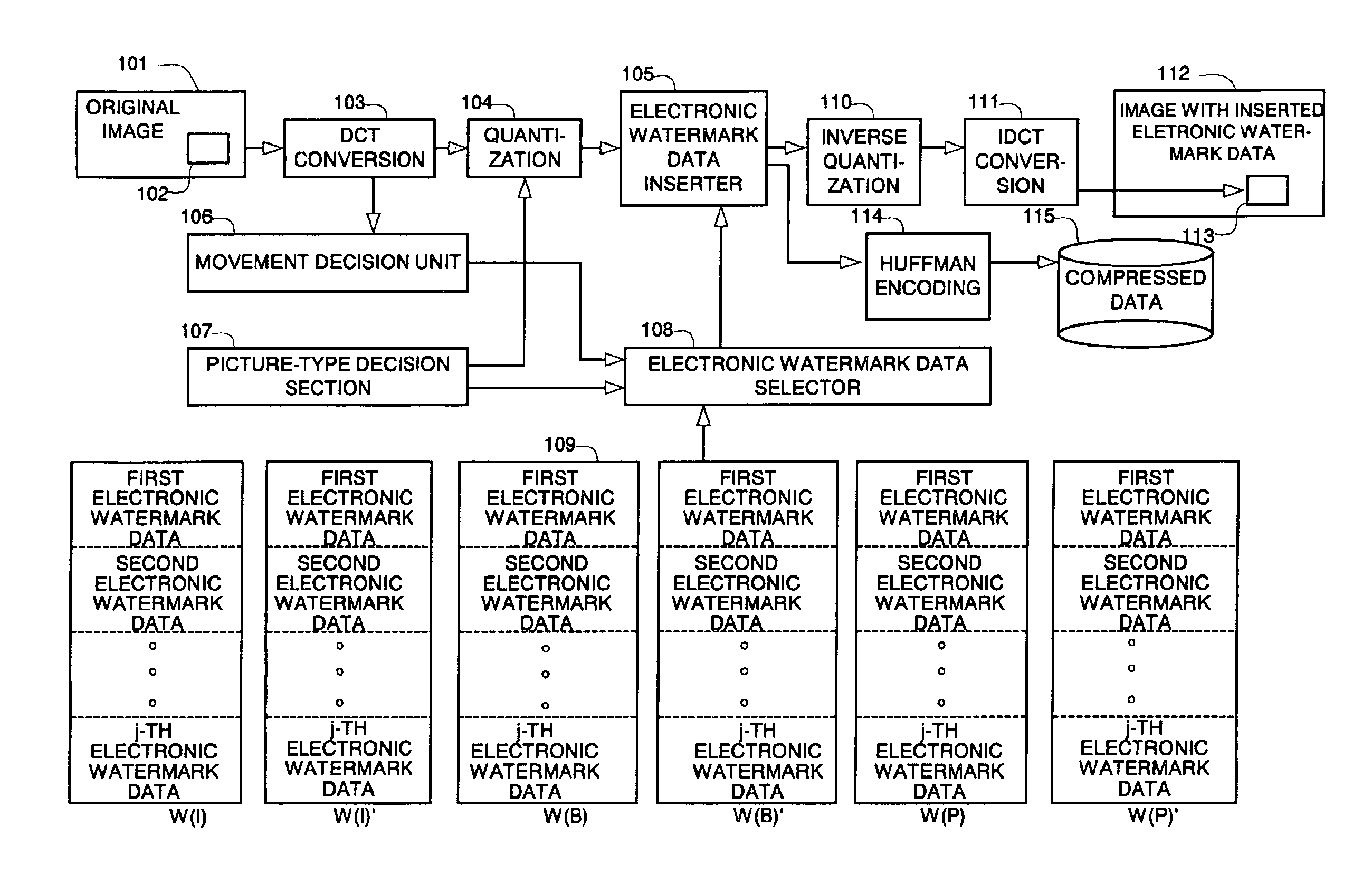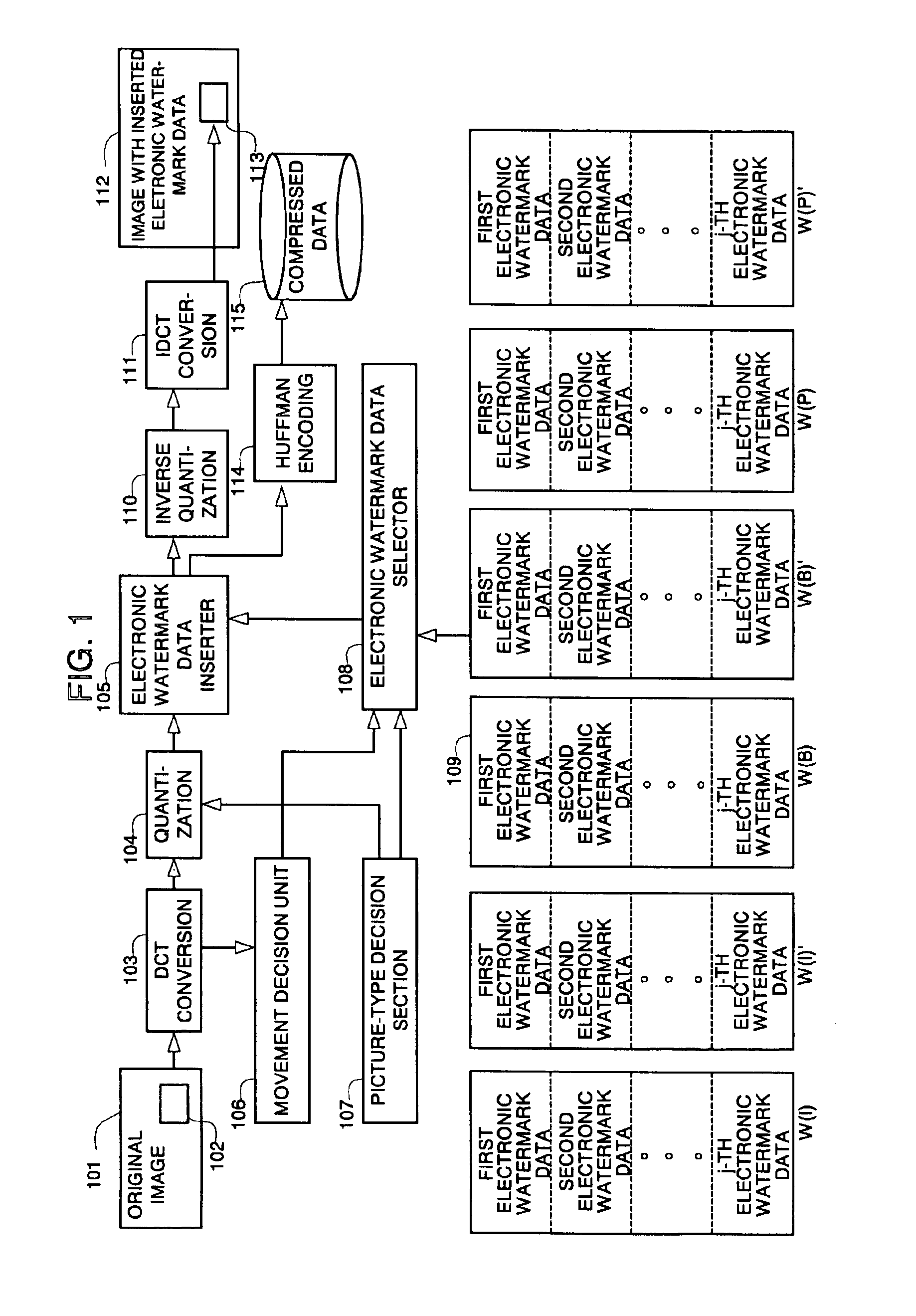System and apparatus for inserting electronic watermark data
a technology system, applied in the field of digital image processing technique, can solve the problems of inability to prevent subsequent replication, troublesome questions raised by illegal copies of digital images, and inability to visually recognize invisible watermark data, etc., and achieve the effect of weakening the strength of electronic watermark data
- Summary
- Abstract
- Description
- Claims
- Application Information
AI Technical Summary
Benefits of technology
Problems solved by technology
Method used
Image
Examples
Embodiment Construction
[0055]FIG. 1 is a system block diagram illustrating electronic watermark data inserting device according to an embodiment of the present invention.
[0056]According to the present invention, an electronic watermark data inserting device includes a DCT converter 103 for extracting a block 102 of k×k pixels from an original image 101, subjecting the block to DCT (discrete cosine transform), and then outputting data after the DCT conversion; a quantizer 104 for quantizing DCT coefficients; a movement decision unit 106 for deciding the magnitude of a movement based on a DCT coefficient generation amount; a picture-type decision unit 107 for deciding a picture type; an electronic watermark data table 109 for storing electronic watermark data of (j×2) types ranging from the first electronic watermark data to the j-th electronic watermark data, calculated to a suitable values based on each picture type and the magnitude of movement; an electronic watermark data selector 108 for selecting the...
PUM
 Login to View More
Login to View More Abstract
Description
Claims
Application Information
 Login to View More
Login to View More - R&D
- Intellectual Property
- Life Sciences
- Materials
- Tech Scout
- Unparalleled Data Quality
- Higher Quality Content
- 60% Fewer Hallucinations
Browse by: Latest US Patents, China's latest patents, Technical Efficacy Thesaurus, Application Domain, Technology Topic, Popular Technical Reports.
© 2025 PatSnap. All rights reserved.Legal|Privacy policy|Modern Slavery Act Transparency Statement|Sitemap|About US| Contact US: help@patsnap.com



